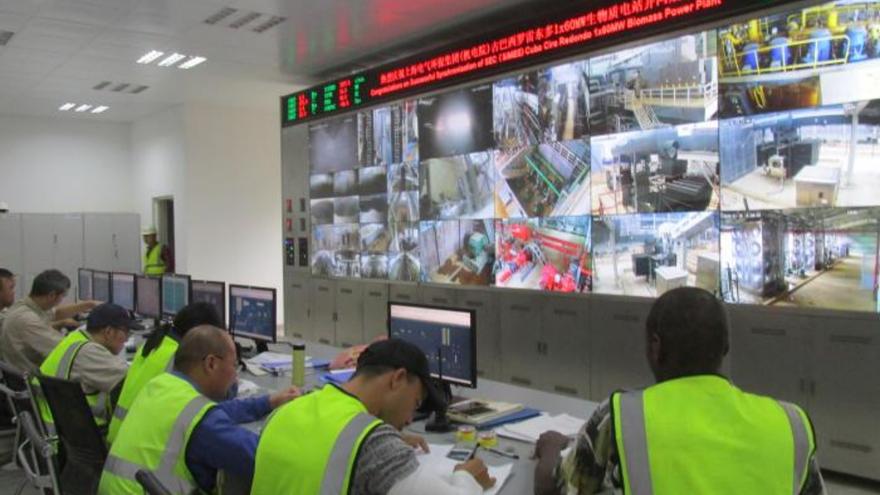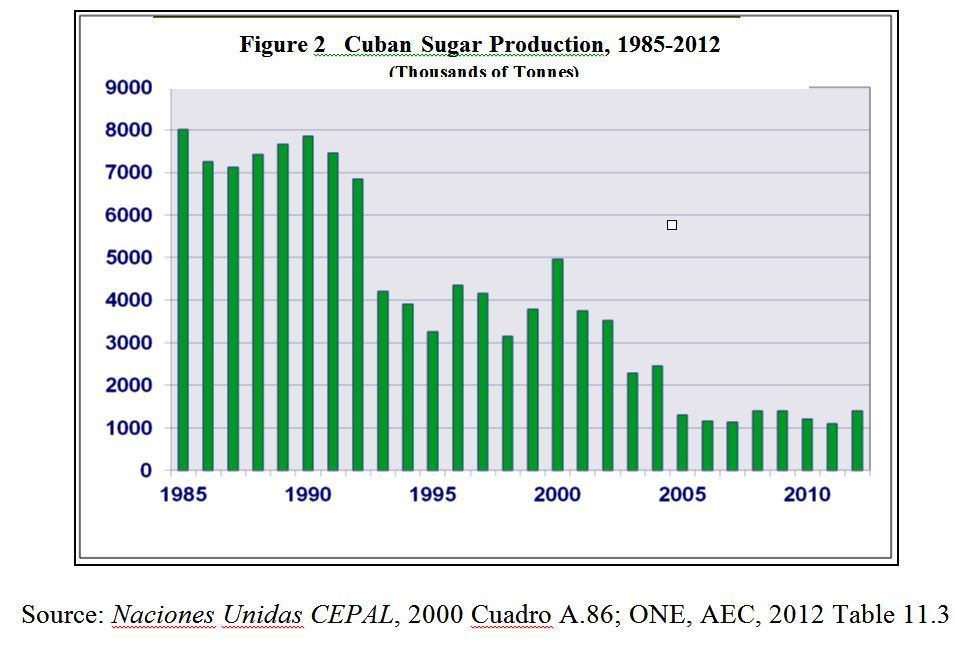
![]() 14ymedio, Madrid, 27 November 2023 — Everything seems to indicate that we will have to dust off the headlines warning of the worst sugar harvest in the history of Cuba. The official State newspaper Granma warned this Sunday that the campaign will take place in a “very tense scenario” and closes the door to optimism, regretting that, despite the more than 100 million pesos invested in its modernization, the Ciro Redondo power plant in Ciego de Avila will once again fail to meet forecasts.
14ymedio, Madrid, 27 November 2023 — Everything seems to indicate that we will have to dust off the headlines warning of the worst sugar harvest in the history of Cuba. The official State newspaper Granma warned this Sunday that the campaign will take place in a “very tense scenario” and closes the door to optimism, regretting that, despite the more than 100 million pesos invested in its modernization, the Ciro Redondo power plant in Ciego de Avila will once again fail to meet forecasts.
The center and the bioelectric plant were to start and synchronize on December 22, although it was planned to start grinding on December 10 to gain an advantage. To do this, several construction works had to be completed, including a retaining wall for the bagasse yard and the assembly of the bearings. If this is not finished in the few remaining days of the month – and everything seems to indicate that it will be – the forecast will go to waste, warned Vidal Martín Sarduy, administrator of the mill.
Two national companies are identified as responsible for this matter, Cubana de Bronce, which has not delivered two pieces, and the Industrial Technical Services Company Fábrica Comandante Manuel Fajardo Rivero
Two national companies are identified as responsible for this matter, Cubana de Bronce, which has not delivered two pieces, and the Industrial Technical Services Company Fábrica Comandante Manuel Fajardo Rivero, in Manzanillo (Granma province), from where several repaired pumps were to arrive on time but don’t seem to have done so.
The harvest should last 86 days in which Ciro Redondo has the goal of producing some 34,000 tons of sugar “if no other inconveniences occur in the process,” says the official organ of the Communist Party, accustomed as the country is, to all kinds of incidents.
Granma regrets that the plant, the most modern in the country after having received a large investment, has become “repeatedly non-compliant.” The mill had been achieving its forecasts for eight years until, in the last four, things have completely changed. This is influenced, the newspaper points out, by the fact that it has not finished its “marriage” with the bioelectric plant, which adds a recent one to its other multiple failures: vibrations in the generator rotor.
As a consequence, the part has had to be extracted and taken to Havana so that Biopower and the Power Plant Maintenance Company can repair it within a period that could be 12 days, but only in the event that the resources of the People’s Republic of China” to fix the ventilation duct plates, “which could be one of the causes of the imbalance or vibration, without ruling out those that could appear when the most exact reviews and diagnoses are carried out,” the media details.
The failure of this synergy is a new mishap in the Cuban industry, which not even a year ago spoke of synchronization – a fact that involved generating energy from sugarcane and marabou biomass – as “an unprecedented energy experience.”
The twinning of the two industries began the previous year, also billed as a “national milestone.” The experts announced that the combination was “forced to run close to perfection” to avoid interruptions in the electrical system, but the breakdowns have been constant, realizing the fears already expressed from the beginning. “If any of these processes fail, the setbacks will return,” Martín Sarduy warned.
To make matters worse, Ciro Redondo accumulates a debt that continues to increase. The last time the data was updated, at the end of 2021, the figure exceeded 74 million pesos (more than three million dollars at the official exchange rate), but since then things have not improved, which suggests that there has been an increase.
The last time the data was updated, at the end of 2021, the figure exceeded 74 million pesos (more than three million dollars at the official exchange rate), but since then things have not improved
The mill was part of the list of plants that did not meet forecasts, which is believed to be as extensive as the previous year. In 2022, the authorities revealed that of the 35 that were active, 32 failed due to a long series of problems ranging from breakdowns to delays in milling, rain, fuel shortage, inadequate water supply or lack of “work discipline.”
The 2021-2022 harvest* was closed with 473,720 tons – instead of the projected 911,000 – which was not even enough to cover the domestic demand of half a million tons and left the export commitments of 411,000 tons uncovered.
As an immediate consequence, the authorities planned that in 2022-2023 there would be a more rational harvest, using fewer resources but with the aim of achieving commitments. Among the measures, the number of plants that had to produce were reduced to 23.
The production figure achieved in that season, which concluded in May of this year, has not been officially disclosed; Homero Acosta Álvarez, secretary of the National Assembly and the Council of State, indicated in an official report that it would barely reach 350,000 tons.
*Translator’s note: the chart below tracks Cuba’s sugar harvest between 1985 and 2012. Additional data from wikipedia: “Sugar production from the 2021-2022 was only 52% of the goal for the season, approximately 474,000 tons. That was about half of 2020-2022 production and the lowest since 1908.”

COLLABORATE WITH OUR WORK: The 14ymedio team is committed to practicing serious journalism that reflects Cuba’s reality in all its depth. Thank you for joining us on this long journey. We invite you to continue supporting us by becoming a member of 14ymedio now. Together we can continue transforming journalism in Cuba.
